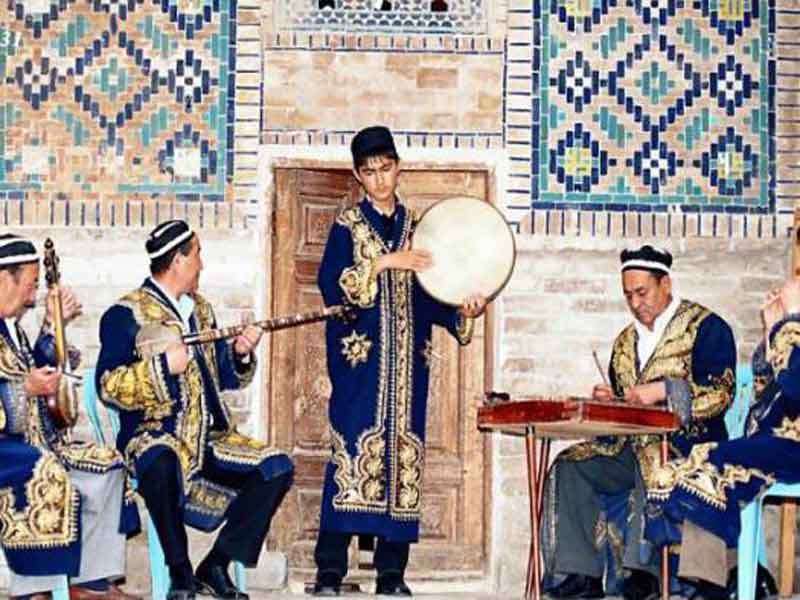Uzbek national and oral-professional music has 4 basic local styles -Khorezm, Ferghana-Tashkent, Bukhara-Samarkand, and Surkhandarya -Kashkadarya, which came as the result of ethnic allocation.
Uzbek songs can be divided into songs of certain times and certain circumstances (ritual - "Yor-Yor", "Kelin salom", calendar - "Navruz", labor - "Mayda", "Yozi", and others), and those executed at any time.
Qo’shik is a household song structured with a melody of a small range, covering one or two stanza of the poetic text. Lapar songs are executed in support of comic dances, games. Ashula is a lyrical song with a developed melody of a wide range and syncope rhythm.
The basis of Uzbek national music is diatonic, but there are elements of chromatics as well. Variability and modulation are widely applied in basic national songs. The rhythm of national songs is quite various.
National-professional musicians studied under supervision of famous artists. Notation was not commonly used and singers did not practice it at all. The basic classical fund of professional music of oral tradition -is maqom, consisting of several cycles according to local attributes.
Musical tools are also rich of variety: string-bowed -ghijjak, kobuz, sat(setar), string-plucked - dombra, dutar, tanbur, ud, rubab, string- shock -chang string-wind - sibizg bulaman, surnai, kashnai, wind- flute - nai, gajir nai, bit-wind -karnai, shock-membrane - doira, noghora, chindaul, and others.





















